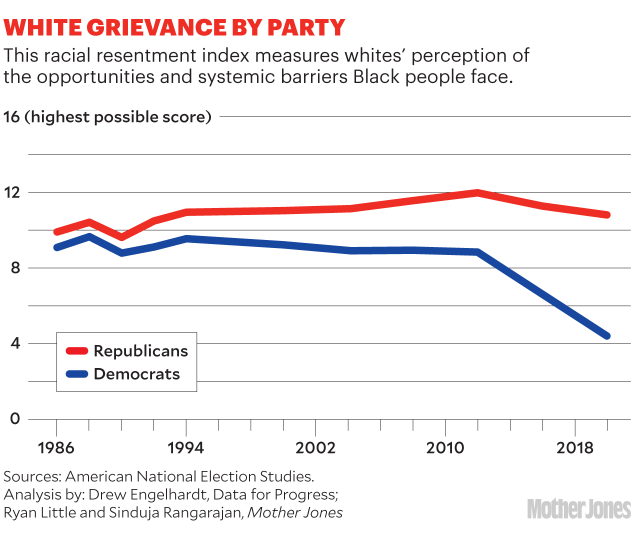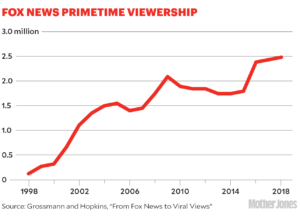Cold Civil War
‘Civil’ Society
October 8, 2021Kurt Thigpen was met with vitriol shortly after he became a school board member in Washoe County, Nevada. Credit: David Calvert, special to ProPublica
We’re Losing Our Humanity, and the Pandemic Is to Blame
“What the hell is happening? I feel like we are living on another planet. I don’t recognize anyone anymore.”
by Sarah Smith
Kurt Thigpen clenched his hands around the edge of the table because if he couldn’t feel the sharp edges digging into his palms, he would have to think about how hard his heart was beating. He was grateful that his mask hid his expression. He hoped that no one could see him sweat.
A woman approached the lectern in the center aisle, a thick American flag scarf looped around her neck.
“Do you realize the mask, the CDC said it’s only 2% effective?” she demanded. “You’re failing our children, you’re failing our country, you’re failing our students’ future ….”
Thigpen fixed his eyes on a spot in the back of the blue-and-green auditorium. He let the person speaking at the lectern fade. It will be over soon, he told himself.
“No, you’re not the boss of me, you work for us, I can’t breathe with it on —”
“Ma’am —”
“Don’t you dare cut my microphone —”
The crowd cheered. Thigpen focused on his breathing.
It will end soon, he told himself. It must. His sweat turned cold under his suit.
“The science isn’t there, take the kids outta the masks and let’s move on.”
When the eight-hour meeting finally ended, he would drive home and pull off the suit and rip off his shirt. He would only take care with his rainbow tie, resting it gently in the closet. It still hangs there today. He would close the door, lay down on his bed, and let himself cry.
The stories of cruel, seemingly irrational and sometimes-violent conflicts over coronavirus regulations have become lingering symptoms of the pandemic as it drags through its second year. Two men on a Mesa-to-Provo flight got into a cross-aisle fight after one refused to wear a mask. A Tennessee teenager asking his school board to impose a mask mandate in honor of his grandmother who died of COVID-19 got jeered by the crowd. A California parent angered by the requirement that his child wear a mask allegedly beat up a teacher so badly that the teacher had to go to the emergency room. An Arizona father showed up to an elementary school with zip ties, allegedly intending to make a “citizen’s arrest” over COVID-19 rules. A Missouri medical center has distributed panic buttons to about 400 employees after an increase in assaults on health care workers by people frustrated over coronavirus-induced visitation restrictions and long wait times.
“What the hell is happening?” said Rachel Patterson, who owns a hair salon in Huntsville, Alabama, and who has been screamed at, cussed out and walked out on for asking clients to don a mask. “Like, I feel like we are living on another planet. Like I don’t — I don’t recognize anyone anymore.”
Full piece: https://www.propublica.org/article/were-losing-our-humanity-and-the-pandemic-is-to-blame
Upworthy:
The National School Boards Association sent a letter to the Biden Administration stating that, “These heinous actions could be the equivalent to a form of domestic terrorism and hate crimes.”
The threats have prompted U.S. Attorney General Merrick Garland to address the issue. In response, Garland directed federal authorities to meet with local law enforcement over the next month to discuss strategies for addressing the increase in “harassment, intimidation and threats of violence against school board members, teachers and workers” in public schools across the country.
Just about every American would agree that we should work to protect school board members from threats of violence. However, Fox News reporter Peter Doocy used Garland’s decision to crack down on violent threats as a way to rile up conservatives.
Just about every American would agree that we should work to protect school board members from threats of violence. However, Fox News reporter Peter Doocy used Garland’s decision to crack down on violent threats as a way to rile up conservatives.
He completely mischaracterized Garland’s directive in a question he asked White House Press Secretary Jen Psaki on Wednesday.
“Does the administration agree that parents upset about their kids’ curriculums could be considered domestic terrorists?” he asked.
“Let me unravel this a little bit,” Psaki answered, saying that Garland is “correct” to say that threats of violence against public servants “run counter to our nation’s core values.”
“Regardless of the reasoning,” she said, “threats and violence against public servants is illegal.”
FOX NEWS mandate from TV host Tucker Carlson [HuffPost]
Your response when you see children wearing masks as they play should be no different from your response when you see someone beat a kid in Walmart. Call the police immediately. Contact child protective services. Keep calling until someone arrives. What you’re looking at is abuse, it’s child abuse, and you’re morally obligated to attempt to prevent it.”
MOTHER JONES:
September/October issue
The Real Source of America’s Rising Rage
We are at war with ourselves, but not for the reasons you think.
by Kevin Drum
Americans sure are angry these days. Everyone says so, so it must be true.
But who or what are we angry at? Pandemic stresses aside, I’d bet you’re not especially angry at your family. Or your friends. Or your priest or your plumber or your postal carrier. Or even your boss.
Unless, of course, the conversation turns to politics. That’s when we start shouting at each other. We are way, way angrier about politics than we used to be, something confirmed by both common experience and formal research.
When did this all start? Here are a few data points to consider. From 1994 to 2000, according to the Pew Research Center, only 16 percent of Democrats held a “very unfavorable” view of Republicans, but then these feelings started to climb. Between 2000 and 2014 it rose to 38 percent and by 2021 it was about 52 percent. And the same is true in reverse for Republicans: The share who intensely dislike Democrats went from 17 percent to 43 percent to about 52 percent.
Likewise, in 1958 Gallup asked people if they’d prefer their daughter marry a Democrat or a Republican. Only 28 percent cared one way or the other. But when Lynn Vavreck, a political science professor at UCLA, asked a similar question a few years ago, 55 percent were opposed to the idea of their children marrying outside their party.
Or consider the right track/wrong track poll, every pundit’s favorite. Normallythis hovers around 40–50 percent of the country who think we’re on the right track, with variations depending on how the economy is doing. But shortly after recovering from the 2000 recession, this changed, plunging to 20–30 percent over the next decade and then staying there.
Finally, academic research confirms what these polls tell us. Last year a team of researchers published an international study that estimated what’s called “affective polarization,” or the way we feel about the opposite political party. In 1978, we rated people who belonged to our party 27 points higher than people who belonged to the other party. That stayed roughly the same for the next two decades, but then began to spike in the year 2000. By 2016 it had gone up to 46 points—by far the highest of any of the countries surveyed—and that’s beforeeverything that has enraged us for the last four years.
Some thoughts…
November 4, 2020It shouldn’t have been this close. After four years of cruel practices and criminal behavior, too many Americans who voted said, “Yeah, this is good.” So much to unpack. Beyond a divided–deeply divided–nation, the people of the United States are in a cold war, seemingly separated by identity politics–tragically, much of the divisiveness is born of disinformation, state television, and far right social media platforms. It will not end. Even if DT loses, he will lead a shadow presidency, haunting and restricting through his amplified media, restrict and diminish forward moving policy. A deeply Republican senate, led by an evil spirit…not hyperbole…along with a 6/3 Supreme Court, will basically make Biden a lame duck, while he tries to heal a nation.
“Win or lose, a lot more people voted for him this year, after watching him as president for four years, than voted for him last time.” [social media post]
It is dark day in this country. And we have so much to atone.
Today, post election and with votes still be counted, coupled with coup behavior and rhetoric from the current president, democracy seems to be only a frame of mind in this country…perhaps it always has been.
From Sleeping Giants:
“No matter what happens with this election, we’re going to have to contend with a media and social media ecosystem that rewards, incentivizes and monetizes the worst of our society, from hate to disinformation to harassment. It’s cooked into the business model. We currently live in a world where the largest advertisers support a network that openly espouses xenophobic, white supremacist ideas, carelessly spreads disinformation and sics it’s viewers on people with whom they disagree, putting them in danger. We’re dealing with social media platforms whose algorithms give an outsized platform to content that aims to vilify minority groups, drive division and spread falsehoods every single day and platform violent extremists and racists who organize real attacks on their websites. What’s worse is that these outlets and platforms thrive on opposition. It profits them. It’s better for business. It’s not hard to see if there’s a new administration that things will get worse, not better. We need to be more vigilant than ever about asking the companies that support these networks and platforms what kind of world they want to live in and to truly live the values that they outwardly express to their customers. But we also need to ensure that these platforms do not dig further into our government, swaying their policies. We need social media platforms held to account rather than being asked to write policy. They have proven that they cannot be trusted to govern themselves. All of this is to say that, no matter the outcome of the election, the work of activists and researchers and journalists and especially lawmakers is only starting. And that it’s more imperative now than it ever was.”
~
Sharing other voices:
While it’s too soon to know the presidential race outcome, this is clear: we must do more to counter the alternative information space FOX News and other Trump media create for Republicans. The race should not be this close given the objective reality of Trump’s performance.
-Evan McMullin, Former: CIA ops officer, GOP policy director, independent presidential candidate
Incredible how competitive Trump is with 230K Covid deaths and kids being locked in cages and everything else. Even if Biden wins he will have to govern in a trump country. This is who America is.
-Gabriel Sherman, journalist
To be clear, this wasn’t a presidential election, it was just a survey on how much this country loves racism and most white people checked the box for “very satisfied.”
-Robin Thede, actress and writer
“When a country shows you who it is, believe it the first time.”
-Anand Giridharadas
“I think the democratic sadness you’re seeing on social media isn’t fatalism or resignation to a Republican win–it’s sadness that we’re not seeing a full scale repudiation to Trumpism.’
[associate professor in Austin]
Before being Republican or Democrat, be human. Regardless of who wins the US election, no one has greater power over you than you. Our minds & hearts are much greater than any politics, and as sovereign beings, we get to choose peace, empathy & humanity.
-Jennifer Rose
From Fr Richard Rohr today, the day after election:
A Call to Be One
Wednesday, November 4, 2020
I return once again to the prophetic words of Sister Joan Chittister who calls us to make an unflinching commitment to act with integrity—out of the fullness of our being—not simply our pragmatic, comfortable, or fearful selves.
As a people, we are at a crossover moment. It is a call to all of us to be our best, our least superficial, our most serious about what it means to be a Christian as well as a citizen. . . .
Where in the midst of such polarization and national disunity is even the hope of oneing, of integrating the social with what we say are our spiritual selves? . . .
Even the ghost of an answer makes serious spiritual demands on us all: To heal such division means that we are obliged to search out and identify our own personal value system. It requires us to admit to ourselves what it is that really drives our individual social decisions, our votes, our political alliances. Is it the need to look powerful? The desire for personal control? . . . Do we have the courage to confront the debased with the ideal—even in the face of ridicule and recrimination—or is cowardice our secret spiritual sickness? In that case, our national health can only get worse.
A national cure also surely demands that we begin to see tradition as a call to return to the best of the past, not a burden to be overcome in order to secure the best of the present. It is the sense of a commonly held tradition of the common good—once a strong part of the American past—that we clearly lack in the present. . . .
[We must] make “Love one another as I have loved you” (see John 13:34) the foundation of national respect, the standard of our national discernment, the bedrock of both our personal relationships and a civilized society. . . .
To be one, we don’t need one party, one program, one set of policies. What could be duller, more stagnant, more destructive of the soulfulness it takes to create and preserve the best of the human enterprise than such a narrow-minded view of planetary life? What we need is one heart for the world at large, a single-minded commitment to this “more perfect union,” and one national soul, large enough to listen to one another for the sake of the planet—for the sake of us all.
So where can we look for oneing in the political arena? Only within the confines of our own hearts. Politics—government—does not exist for itself and, if it does, that is precisely when it becomes at least death-dealing if not entirely evil. . . .
In the end, politics is nothing more than an instrument of social good and human development. It is meant to be the right arm of those whose souls have melted into God.
More from Richard:
I consider Quaker author and activist Parker Palmer a true elder. He has clearly “fallen upward”—humbly learning and growing over the years while also generously giving of himself to build a better future with the next generation. From that vantage point, Palmer writes:
For those of us who want to see democracy survive and thrive—and we are legion—the heart is where everything begins: that grounded place in each of us where we can overcome fear, rediscover that we are members of one another, and embrace the conflicts that threaten democracy as openings to new life for us and for our nation. . . .
Of all the tensions we must hold in personal and political life, perhaps the most fundamental and most challenging is standing and acting with hope in the “tragic gap.” On one side of that gap, we see the hard realities of the world, realities that can crush our spirits and defeat our hopes. On the other side of that gap, we see real-world possibilities, life as we know it could be because we have seen it that way. . . .
If we are to stand and act with hope in the tragic gap and do it for the long haul, we cannot settle for mere “effectiveness” as the ultimate measure of our failure or success. Yes, we want to be effective in pursuit of important goals. . . . [But] we must judge ourselves by a higher standard than effectiveness, the standard called faithfulness. Are we faithful to the community on which we depend, to doing what we can in response to its pressing needs? Are we faithful to the better angels of our nature and to what they call forth from us? Are we faithful to the eternal conversation of the human race, to speaking and listening in a way that takes us closer to truth? Are we faithful to the call of courage that summons us to witness to the common good, even against great odds? When faithfulness is our standard, we are more likely to sustain our engagement with tasks that will never end: doing justice, loving mercy, and calling the beloved community into being.
Parker Palmer’s understanding of the “tragic gap” recognizes that no matter what we do, we can never completely solve the problem. In all our actions, there is always a space left incomplete, imperfect, which God alone can fill. The search for “the perfect” often keeps us from “the good.” The demand for one single issue about which we can be totally right actually keeps us from reading the whole picture—often this is true in regard to voting.
gate gate pāragate pārasaṃgate bodhi svāhā
भगवतीप्रज्ञापारमिताहृदय
In our ugly and injurious present political climate, it has become all too easy to justify fear-filled and hateful thoughts, words, and actions in defense against the “other” side. We project our anxiety elsewhere and misdiagnose the real problem (the real evil), forever exchanging it for smaller and seemingly more manageable problems. The over-defended ego always sees, hates, and attacks in other people its own faults—the parts of ourselves that we struggle to acknowledge. We do not want to give way on important moral issues, but this often means we don’t want to give way on our need to be right, superior, and in control. It is our deep attachment to this false or manufactured self that leads us into our greatest illusions. Most of us do not see things as they are; we see things as we are.
The Heart Sutra (sometimes called The Heart of the Perfection of Wisdom) is considered by many to be the most succinct and profound summary of Buddhist teaching—surely it must have something to say to all of us. It ends with a mantra that is considered “the mantra beyond compare” because of its daring proclamation of the final truth that takes our whole life to uncover and experience. It is enlightenment itself and hope itself in verbal form. It is the ultimate liberation into Reality.
Here is the Sanskrit transliteration of the refrain:
Gate gate pāragate pārasamgate bodhi svāhā!
Here is how it is pronounced:
Ga-tay, ga-tay, para ga-tay, parasam ga-tay boh-dee svah-ha!
Here is the meaning:
Gone, gone, gone all the way over, the entire community of beings has gone to the other shore, enlightenment—so be it!
This is not meant to be a morbid or tragic statement, but a joyous proclamation, in its own way similar to Christians saying “Alleluia!” at Easter. It is liberation from our grief, our losses, our sadness, and our attachments—our manufactured self. It accepts the transitory and passing nature of all things without exception, not as a sadness, but as a movement to “the other shore.” We do not know exactly what the other shore is like, but we know it is another shore from where we now stand and not a scary abyss.
I would like to offer you a short and inspired litany, and encourage you to make your own additions. The response in every case is a shortened to “Gone, gone, entirely gone!” (for the sake of brevity and impact). It might be called a Litany of Liberation or Detachment:
All the centuries before me:
Gone, gone, entirely gone!
All the nations of the earth:
Gone, gone, entirely gone!
All kings, generals, and governors:
Gone, gone, entirely gone!
All the wars, plagues, and tragedies:
Gone, gone, entirely gone!
All human achievements by individuals and groups:
Gone, gone, entirely gone!
All sickness, sin, and error:
Gone, gone, entirely gone!
All our identities, roles, and titles:
Gone, gone, entirely gone!
All hurts, grudges, and memories of offense:
Gone, gone, entirely gone!
All enslavement, abuse, and torture:
Gone, gone, entirely gone!
All disease, afflictions, and lifetime wounds:
Gone, gone, entirely gone!
All rejections, abandonments, and betrayals:
Gone, gone, entirely gone!
All human glory, fame, money, and reputation:
Gone, gone, entirely gone!
Your logical, educated mind may say, “Oh, but these things continue in human memory, consciousness, and the standing stones of culture,” which is true and good. That is not the point this sutra is intended to communicate, however; this is ritual and religious theater, not rational philosophy. In terms of all those who preceded us, these things are indeed “Gone!” (Buddhism also uses the word “Empty!”) It takes just such a shock to encourage the ego to let go of the passing self, the false self, the relative self, the self created by memory and choice.
All comforts, luxuries, and pleasures:
Gone, gone, entirely gone!
All ideas, information, and ideology:
Gone, gone, entirely gone!
All image, appearance, and privacy:
Gone, gone, entirely gone!
All our superiority, self-assuredness, and expertise:
Gone, gone, entirely gone!
All human rights, ambitions, and fairness:
Gone, gone, entirely gone!
All personal power, self-will, and self-control:
Gone, gone, entirely gone!
This is the spiritual art of detachment, which is not aloofness or denial, but the purifying of attachment. It isn’t often taught in capitalistic societies, where clinging and possessing are both means and ends, accumulation is the primary measure of progress, and personal power or self-will is both the foundational myth and supreme idol.
In our world, detachment itself can become a kind of EXODUS, an abandoning—whether forced or chosen—of the very things that give us status, make us feel secure or moral, and oftentimes that pay the bills.
In his book No Man Is an Island, Thomas Merton discussed the spiritual link between detachment and hope. Yes, hope! This connection may seem a bit counterintuitive at first, if not contradictory. Yet, as he explains,
We do not hope for what we have. Therefore, to live in hope is to live in poverty, having nothing. . . . Hope is proportionate to detachment. It brings our souls into the state of the most perfect detachment. In doing so, it restores all values by setting them in their right order. Hope empties our hands in order that we may work with them. It shows us that we have something to work for, and teaches us how to work for it.
We live in a time of great hostility, and the temptation from which we must defend ourselves is to pull back from others, deny our shadow, and retreat into our own defended camps or isolated positions. This temptation is not detachment, but the giving over of ourselves to the illusion of separation. True spiritual action (as opposed to reaction) demands our own ongoing transformation, often changing sides to be where the pain is, as Jesus exemplified in his great self-emptying. Rather than accusing others of sin on the Left or the Right, Jesus instead “became sin” (2 Corinthians 5:21). He stood in solidarity with the problem itself, and his compassion and solidarity were themselves the healing.
Therefore, “let us go to him, then, outside the camp, and bear the humiliation he endured. For there is no permanent city for us here, but we are looking for the city that is to come” (Hebrews 13:13–14).
Richard Rohr

Cold Civil War?
September 2, 2020“In the Spring of 2011, Donald Trump was booked on the Today Show, The View, CNN, Fox, etc. to discuss his “theory” that Barack Obama was not born in America. The US media mainstreamed racist innuendo and made Trump’s political ascent possible. Don’t let it happen again.” -Ben Rhodes, author, ‘The World As It Is’
“The ideal subject of totalitarian rule is not the convinced Nazi or the convinced Communist but people for whom the distinction between fact and fiction (ie. the reality of experience) and the distinction between true and false (i.e., the standards of thought) no longer exist.” -Hanna Arendt
We are in a cold civil war
America after the conventions
by, Anand Giridharadas, The.Ink
|
|
“On this morning after the end of the party conventions, I woke up with this feeling: This is how it gets right before the end — or before a new beginning.
I had woken up early to make some notes for a television appearance. More notes than usual came out. I thought I would share them, more or less as is:
My sense after watching these two conventions is that we live in two countries impermeable to each other.
We are locked in a cold civil war.
Each country feels the other is an existential threat to America. Each sees itself as the carrier of truth and freedom and righteousness. Each sees itself as honoring the founding values. Each says it will keep you safe. And the problem is that we have become a society where persuasion is nearly impossible, where people live in their own castles of reality.
I watched Fox News a little last night to understand what it looks like from inside the death cult. And it is a complete, coherent, airtight, fascistic world.
I agree with Michael Beschloss, who said on TV last night that we may be a year away from losing our democracy. This is not me saying it or AOC saying it or Joe Biden saying it; it’s Michael Beschloss saying it. A presidential historian. A year away from losing our democracy.
Until lately, I haven’t really thought that Donald Trump would win. But after watching these conventions, I dread that he is indeed going to win — until you hear otherwise.
—
FOCUS
If this cult is going to be defeated, it is going to take the most heroic effort and focus between now and November.
And that’s hard because a lot of the progressives with real passion don’t feel it for Joe Biden. And, frankly, it’s more his fault than theirs. And the passion and energy that you see in Black Lives Matter don’t necessarily land on Joe Biden’s shoulders, because of his record on criminal justice and mass incarceration.
Plenty of people are lecturing those folks to come into the tent and focus.
But, far more important, I think, is Biden coming to them. To speak to the Black Lives Matter movement folks, to speak to progressives, to make promises that, fair enough, do not hurt him with the broad coalition he feels he needs to build, because this is a work of coalition-building, but that ignites loving fury and passion like we have never seen.
I live in Brooklyn. Half the people on the street in the primaries had a T-shirt of some candidate or other. In the general election, I have seen exactly one Joe Biden T-shirt among thousands of people.
This is not the time to blame the non-T-shirt wearers. Between now and November, Joe Biden needs to do everything in his power to ignite a righteous political fervor like we’ve never seen before.
And, yes, in this many-way marriage, we’re all going to have to give something. The progressives are going to have to shift from negging Biden to pushing and pressuring and summoning him.
These beautiful protests, when they’re at their best, have drastically moved public opinion in their favor. We need public opinion to keep moving that way.
—
CONSOLIDATION AND OUTREACH
This campaign for the rescue of the American republic needs to fight on two distinct fronts. We need a passionate consolidation and enlivening on the left. And there have been a lot of missteps here — but there is still time to repair it.
And then in terms of outreach to the other side, the approach shouldn’t be the courting of never-Trumpers at the cost of your own party’s soul — but rather a careful study of the right’s ways.
What I saw over four nights of the RNC was a party that is still the most gifted in American politics at reframing increasingly bizarre, dangerous, destructive, nihilistic policies and prescriptions in the gauzy, stirring language of faith, family, heroism, bravery, and liberty.
In modern times, the Republican Party has forced itself into the extraordinary challenge of selling policies that would serve ever fewer people to a majority. So they have learned how to speak to people. This is the moment for the left to really step up on speaking to people.
Speaking to people in a commanding language that is not wonky, that is not hyper-woke, that is not college-sounding, that is not exclusionary and hard to ramp onto, that strums the courts of widely shared values, not ideological stands. Joe Biden is already better at this than many others, but there is much runway still.
It is existential work right now to find the language that will stoke the fire of those who believe most ardently in the cause, and will call in those who believe least in it but patriotically fear the loss of the republic — this language is hungering to be found.
This is how it gets right before the end — or before a new beginning.”


 What do we know about more recent views of racism? One thing we know for sure is that both white and Black Americans have gotten
What do we know about more recent views of racism? One thing we know for sure is that both white and Black Americans have gotten 




